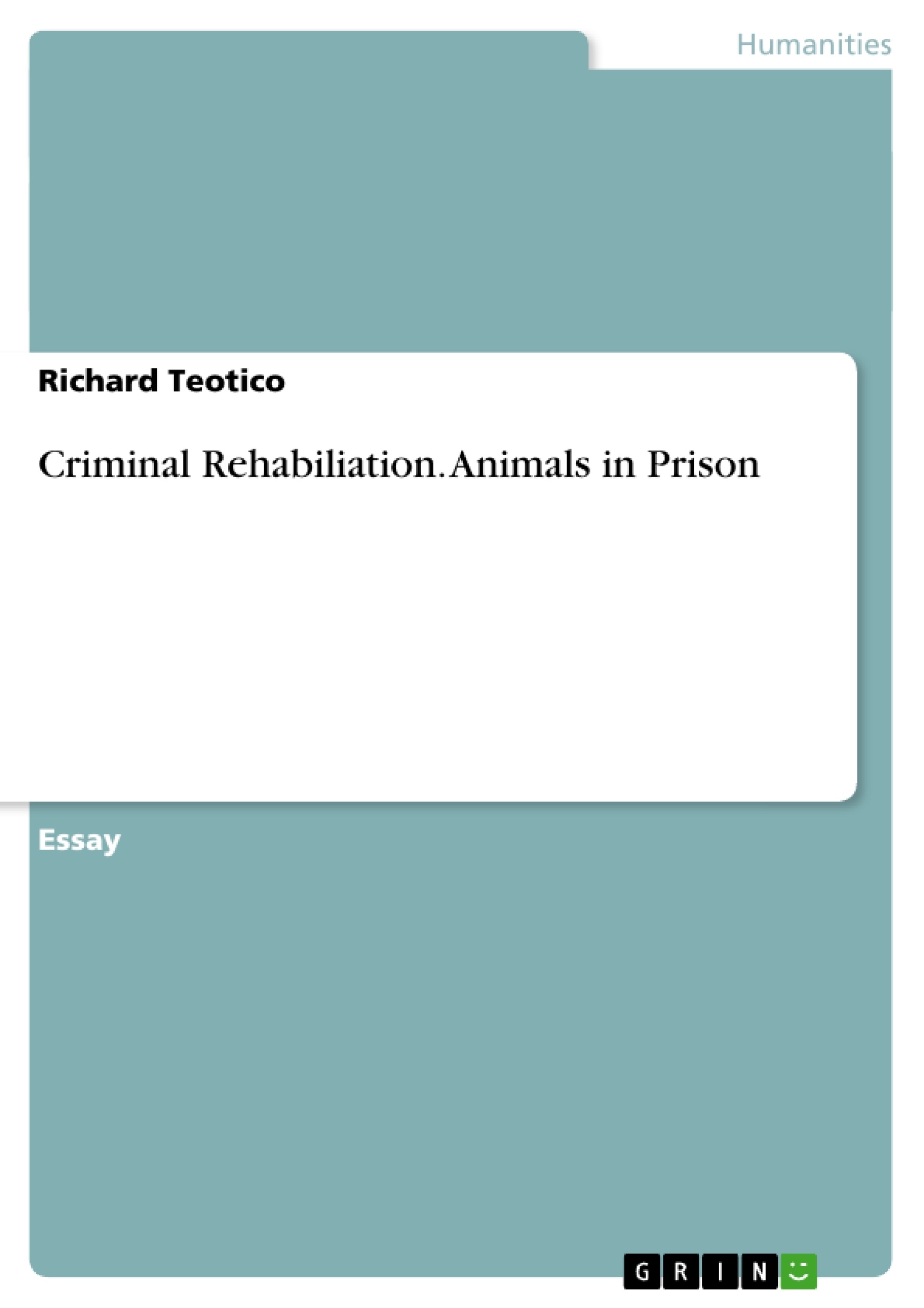Modern society has always been fascinated with criminal activity, it floods our newspapers, serves as a plot for shows, movies, games, and is even used by political parties to push social policies. However, once the perpetrators of crime are placed in prison, it is as if society turns a blind eye. In an ironic twist of fate, incarcerated offenders are often met with an environment which further propagates future deviant behaviour (Steiner & Wooldredge, 2008).
While many believe that prison is intended to serve as a form of punishment, it is often overlooked that many offenders will eventually be re-introduced into society. So while prison does not have to serve as a proverbial “bed and breakfast,” proper rehabilitative measures need to be taken in an attempt to mitigate the implications of aggressive temperaments and poor behavioural controls – which are often linked with crime (Sprinkle, 2008).
This paper will examine one questionable form of prison rehabilitation program, the use of animals as a tool in workshops to encourage pro-social behaviour and whether this program will lessen the rate of inmate on inmate victimization within the prison setting. Victimization for this study is intended to include: both sexual and physical assault, robbery, threats, extortion, and theft.
Inhaltsverzeichnis (Table of Contents)
- Introduction
- Literature
- Children and Crime
- Offenders and Animals
- Current Animal Program Usage
- Importance
- Benefits to Offenders
Zielsetzung und Themenschwerpunkte (Objectives and Key Themes)
This paper aims to investigate the effectiveness of using animals as a rehabilitation tool within prison settings. The goal is to evaluate whether animal programs can promote pro-social behavior and reduce inmate-on-inmate victimization.
- The correlation between animal rehabilitation programs and reduced prison victimization
- The impact of animal programs on offenders' self-esteem, pro-social behavior, and aggression management
- The use of animals as a form of therapy to address the subconscious fears of offenders
- The role of animal programs in promoting positive social ties and reducing recidivism rates
- The potential benefits of animal programs for both offenders and the animals themselves
Zusammenfassung der Kapitel (Chapter Summaries)
- Introduction: The paper introduces the context of prison rehabilitation programs, highlighting the challenges of creating a positive environment for offenders. The paper focuses on animal rehabilitation programs as a potential solution to reduce victimization and promote pro-social behavior.
- Literature: This chapter explores the connection between childhood experiences, animal abuse, and criminal behavior. It examines research indicating a correlation between violent offenders and a history of animal abuse, suggesting a potential link between aggression towards animals and aggression towards humans.
- Current Animal Program Usage: This chapter discusses the existing use of animal programs in settings involving children, the elderly, and hospitals. The benefits of these programs in promoting pro-social behavior, reducing stress, and enhancing overall well-being are explored.
- Importance: This chapter emphasizes the importance of social ties in reducing recidivism and preventing victimization within prisons. It explores the negative psychological and physical effects of the prison environment and the potential role of animals in creating a more positive and supportive atmosphere.
- Benefits to Offenders: This chapter details the specific ways in which animal rehabilitation programs can benefit offenders. It discusses the role of animals in promoting responsibility, building confidence, and fostering pro-social behavior. The chapter also highlights the potential for animals to help offenders manage their aggression and develop empathy.
Schlüsselwörter (Keywords)
The main keywords and focus topics of the text include: animal rehabilitation, prison victimization, pro-social behavior, aggression management, self-esteem, empathy, social ties, recidivism, and therapy.
- Quote paper
- Bachelor of Arts Criminology and Psychology Richard Teotico (Author), 2008, Criminal Rehabiliation. Animals in Prison, Munich, GRIN Verlag, https://www.grin.com/document/230467



